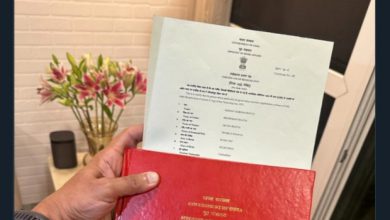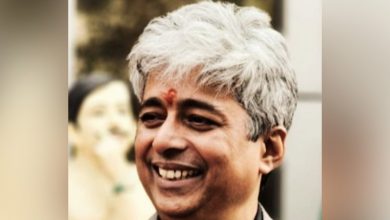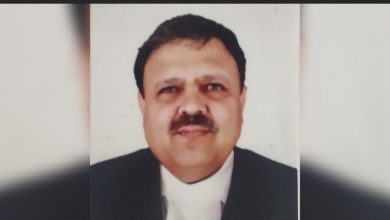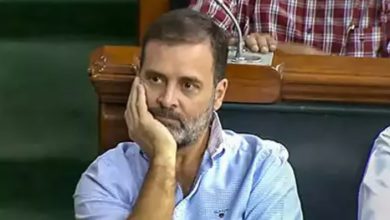Politics over Ram Nath Kovind’s ascension as NDA candidate point to importance of presidential post

As some opposition parties led by Congress meet on Thursday to decide on their presidential candidate to take on Ram Nath Kovind, they face an uphill contest. While there is no doubt that the ruling NDA alliance has a significant majority in the electoral college (comprising all elected MPs and MLAs of India), one can never discount the possibility of an “upset”. This is because unlike in voting by elected representatives in Legislative Assemblies and Parliament, party whips cannot be issued in voting for presidential elections. This means members of the electoral college can always exercise their choice as per “conscience”.
Incidentally, it was this conscience voting that helped VV Giri get elected as president in 1969, even though he was not the official Congress candidate. That was Neelam Sanjeeva Reddy. But India witnessed the unprecedented spectacle of then prime minister Indira Gandhi openly defying the party directive and supporting Giri, and asking her followers to give a conscience-vote.
Incidentally, the 1969 elections also marked the beginning of the politicisation of the Office of President. Till then, India had outstanding men of intellect and integrity as presidents — Rajendra Prasad, Radha Krishnan and Zakir Hussein. One is not belittling Giri’s credentials, but the fact remains that his election marked the onset of the trend of the ruling party at the Centre installing party loyalists as presidents with a clear idea that the person occupying the highest constitutional position of the country will act not only as a rubber stamp of the government of the day but also be a symbolic factor to play nefarious identity politics of caste, creed and gender.
The importance of Kovind’s caste has been argued in Firstpost, especially considering the forthcoming Assembly election in Gujarat. But we have seen how Indian presidents have been chosen in the past on the basis of them happening to be women or Muslims. It was only in 2002 that there was an exception to this trend when the then NDA government went for a consensus candidate in APJ Abdul Kalam, a non-politician (His predecessor KR Narayanan, though a career diplomat, had joined the Congress party and was a minister in the Narasimha Rao regime under the Dalit-quota).
In other words, the politicisation of the president’s office has degenerated over the last 50 years. And nobody is talking of persons of eminence and competence occupying the exalted office. But it’s fast becoming clear that the caste, gender and religion of a candidate now assumes more importance. And that is why we hear the need of a Muslim president, a woman president, or a Dalit president.
It’s a great pity that this is the case, considering that the President of India is expected to play a very vital role as per our Constitution. If one reads the Constitution, the term “president” appears 598 times, compared to only 15 mentions of “prime minister”. Under Article 53 of the Constitution, the executive power of the Union shall be vested in the president, and shall be exercised by him “either directly or through officers subordinate to him”. The same article also vests in the president the “supreme command of the defence forces of the Union”.
And if one goes by articles 75, 78 and 86 of the Constitution, the president can direct the Cabinet to discuss any subject, dismiss any minister, and address one or both Houses of Parliament to proffer opinion on any subject. The prime minister must brief the president on all administrative matters as directed by the latter. All promotions, transfers, demotions and dismissals of officials are under the president’s name and subject to his discretion.
But as we all know, the real power in the country is actually exercised by the prime minister and his Cabinet. The president does what the prime minister wants him to. That was not exactly the case when our Constitution was framed. There is a powerful school of thought that does not view the Indian president as a titular head of State like the British monarch. One may not agree with this view, but there does remain a grey area that needs to be clarified by the Supreme Court.
One may cite here the debate between BR Ambedkar, the chairman of the drafting committee of the Constitution, and Rajendra Prasad, president of the Constituent Assembly, and the man who eventually became the first President of India, on 23 May, 1949:
“The president of the Indian Union will be generally bound by the advice of his ministers. He can do nothing contrary to their advice, nor can he do any thing without their advice. The President of the United States can dismiss any secretary at any time. The president of the Indian Union has no power to do so as long as his ministers command a majority in Parliament,” Ambedkar had said.
To this, Rajendra Prasad pointed out, “I have my doubts if this word could bind the president. It (the draft Constitution) only lays down that there shall be a council of ministers with the prime minister at the head to aid and advise the president in the exercise of his functions. It does not say that the president will be bound to accept that advice.”
Ambedkar then replied, “In all matters within the scope of the executive power of the Union, the president shall, in the exercise of the powers conferred upon him, be guided by the advice of his ministers. We propose to make some amendment to the draft to make things very clear.”
Interestingly, however, when the Constitution was finally adopted on 26 January, 1950, Ambedkar’s promised amendment of the draft did not find any place. Article 74 only said, “There shall be a council of ministers with the prime minister at the head to aid and advise the president in the exercise of his functions.” Nowhere did it say that the president is bound to accept this advice.
No wonder that, during Emergency, prime minister Indira Gandhi did bring out the 42nd Amendment (1976) of the Constitution that said: “There shall be a council of ministers with the prime minister at the head to aid and advise the president who shall, in the exercise of his functions, act in accordance with such advice.”
However, under the subsequent Janata Party rule, when Morarji Desai was Prime Minister, the 44th Amendment of 1978 was passed, to take care of “the butchering of the Constitution by the 42nd Amendment”.
The powerlessness of the president in being bounded by the ministers’ advice was diluted, and a second paragraph was added to give the president one chance at having the ministers reconsider the advice. It said, “Provided that the president may require the council of ministers to reconsider such advice, either generally or otherwise, and the president shall act in accordance with the advice tendered after such reconsideration.”
Has the debate ended here? Not necessarily.
Words like “such reconsideration” are open to various interpretations. But one thing is clear: It will be wrong to say that the Indian president is exactly like the British monarch, who reigns but does not govern. After all, in this age of coalition politics, when no political party has the legislative majority to form the government on its own, the president can play a huge role in deciding who gets the first invitation to form the government. And this is one of the primary reasons why every party hopeful of forming a government after the next general elections will like to have its own person at Raisina Hill.
Even otherwise, under Article 78 of the Constitution, “it shall be the duty of the prime minister” to communicate to the president all decisions of the council of ministers relating to the administration of the affairs of the Union and proposals for legislation; to furnish such information relating to the administration of the affairs of the Union and proposals for legislation as the president may call for, and “if the President so requires, to submit for the consideration of the council of ministers any matter on which a decision has been taken by a minister but which has not been considered by the council”.
But consider a situation when the president exercises the power inherent in Article 78, but the council of ministers headed by the prime minister do not follow this. And such a thing has happened in the past; there were strong speculations that then president Zail Singh was contemplating sacking then prime minister Rajiv Gandhi in the ’80s, as communication between the two had broken down following the latter stopping his weekly meetings with the former.
Obviously, the 42nd Amendment notwithstanding, there are some grey areas which a president can exploit to the great discomfiture of the prime minister. And this explains why the race to Raisina Hill is so interesting. Every prime minister will like to have a president who shares a common vision.







